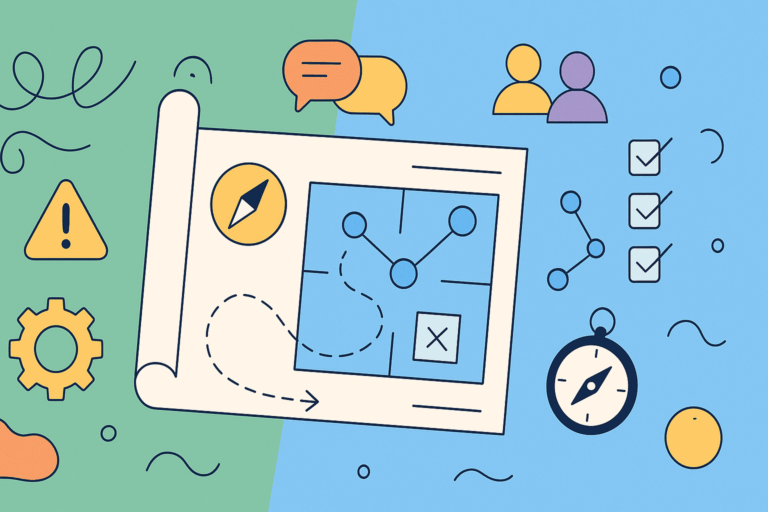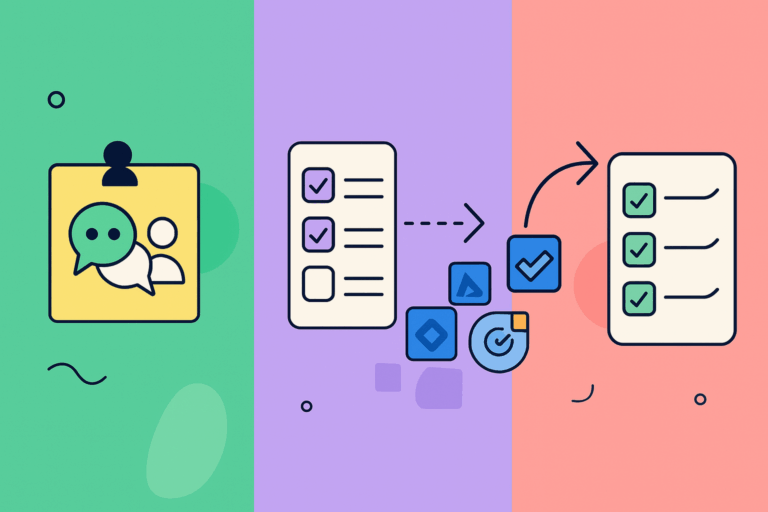Effective standup meetings are a fundamental part of agile workflows, designed to foster quick, effective communication among team members. However, one of the most common pain points is participants showing up unprepared. This lack of preparation can lead to disorganized, inefficient meetings, where updates are unhelpful and chaotic. In this blog post, we will explore why this issue occurs, its impact on team productivity, and how NASA – Not Another Standup App for Jira can help ensure everyone comes prepared.
Stand-Up Meeting: The Root Causes of Unprepared Participants
Several factors can contribute to team members arriving unprepared for standup meetings:
- Lack of Time: Team members often juggle multiple tasks and may not prioritize preparing for the standup.
- Unclear Expectations: Without clear guidelines on what to prepare, participants may not know how to effectively contribute.
- Inconsistent Habits: Regular preparation requires consistent habits, which some team members may not have developed.
- Overlooked Importance: Some may undervalue the significance of preparation, viewing standups as routine rather than critical.
Agile teams can mitigate these issues by implementing structured meetings and effective management tools to ensure all team members are actively engaged and informed throughout the project lifecycle.
What is a Stand Up Meeting?
- A stand up meeting is a brief meeting where team members discuss project progress without going into granular details.
- It’s a technique popularized by Agile methodologies to streamline team communication and address immediate concerns.
- The meeting aims to create transparency, identify potential roadblocks, and facilitate collaboration.
- Stand up meetings are usually 15 minutes long and allow each contributor to report on their accomplishments since the last meeting.
Benefits of Daily Stand Up Meetings
- Daily stand up meetings allow team members to work collaboratively toward project goals.
- They help Agile teams stay on track and monitor their current workflow.
- Daily stand up meetings inform and draw out problems, so you can get ahead of issues before they pop up.
- They enforce accountability, as team members regularly report their progress and plans.
- Stand up meetings can be beneficial to any team that wants to quickly share updates to ensure team members are on the same page.
Preparing for a Stand Up Meeting
- Commitment and consistency are key components of the Agile methodology.
- Stand up meetings should happen at the same time every day and take priority over other meetings.
- The ideal timing can vary based on team dynamics and work schedules, but the morning is generally the most effective time.
- Make sure all team members participate, as stand up meetings are only effective if the entire team attends.
The 3 Key Questions of a Stand Up
- In a stand up meeting, each team member answers three key questions: What did I work on yesterday? What am I working on today? Are there any obstacles in my way?
- These questions provide an overview of tasks, facilitating better visibility into the project’s status and potential challenges.
- The questions help team members stay focused and on track, ensuring everyone is working towards the same goals.
Effective Meeting Structure
- The leader of the stand up meeting is in charge of moderating the meeting and ensuring it stays on track.
- The leader can be a Scrum master, product manager, or other project manager, depending on the Agile methodology used.
- Keep stand up meetings short, focused, and relevant to the team.
- Avoid table side conversations, and instead, table discussions like this for after the meeting.
Common Pitfalls to Avoid
- Stand up meetings can spin out of control if not managed properly.
- Common mistakes include going off-topic, discussing too much detail, and not having a clear agenda.
- Meetings can turn into generic status meetings, become too long, and team members may not identify roadblocks.
- Avoid these pitfalls to ensure effective stand up meetings.
Running Remote Meetings
- Even distributed teams can include everyone in daily stand up meetings using video conferencing and a clear agenda.
- Share the work board digitally so everyone can see the items in the sprint or Kanban flow.
- Running a stand up meeting in Agile teams remotely introduces a few fresh challenges, but many can be easily overcome.
- Asynchronous stand ups via Slack can be a more effective solution for remote teams.
Tools and Resources
- Use work management tools to keep everything organized and streamline workflows.
- Consider using a dynamic tool to organize and manage your team’s work in one place.
- There are many tools available to help make stand ups more effective, such as Slack stand up bots.
Best Practices for Team Collaboration
- Keep stand up meetings short and focused to ensure everyone’s attention and updates are shared quickly.
- Establish a clear leader to moderate the meeting and keep it on track.
- Make sure all team members participate and stay connected with the team, both physically and mentally.
- Avoid table side conversations and keep discussions brief.
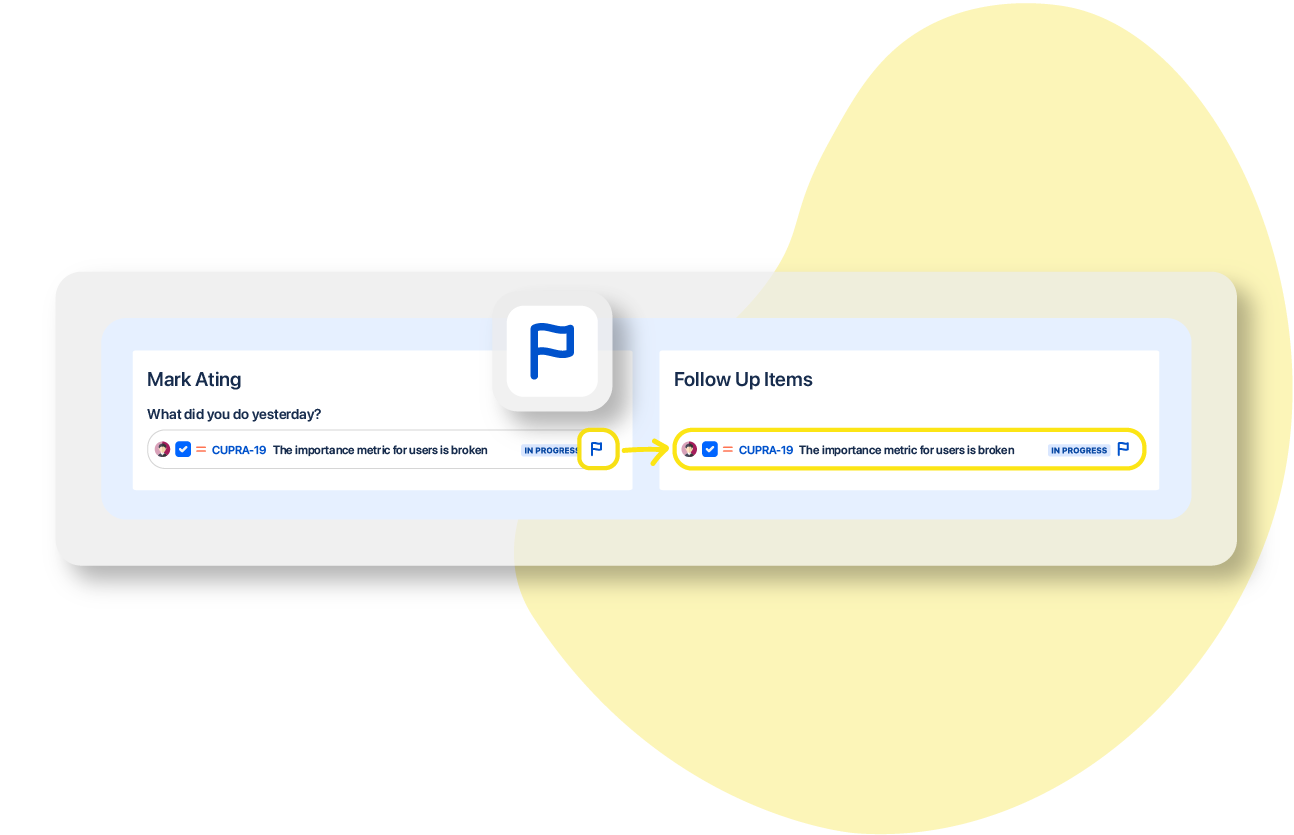
Measuring Success
- Effective stand up meetings are crucial for software development teams, especially those using Agile methodologies.
- Measure success by tracking progress, identifying roadblocks, and facilitating collaboration.
- Use metrics such as team velocity, cycle time, and lead time to measure the effectiveness of stand up meetings.
Scaling for Large Teams
- As teams grow, stand up meetings can become more challenging to manage.
- Consider using a Scrum of Scrums approach to scale stand up meetings for large teams.
- Use technology to facilitate communication and collaboration among team members.
Conclusion
- Daily stand up meetings are essential for any Agile project.
- Keep your team focused by sticking to the agenda, preparing updates ahead of time, and scheduling follow-up meetings to discuss any challenges that arise.
- With the right tools and resources, stand up meetings can be an effective way to facilitate team collaboration and drive project success.
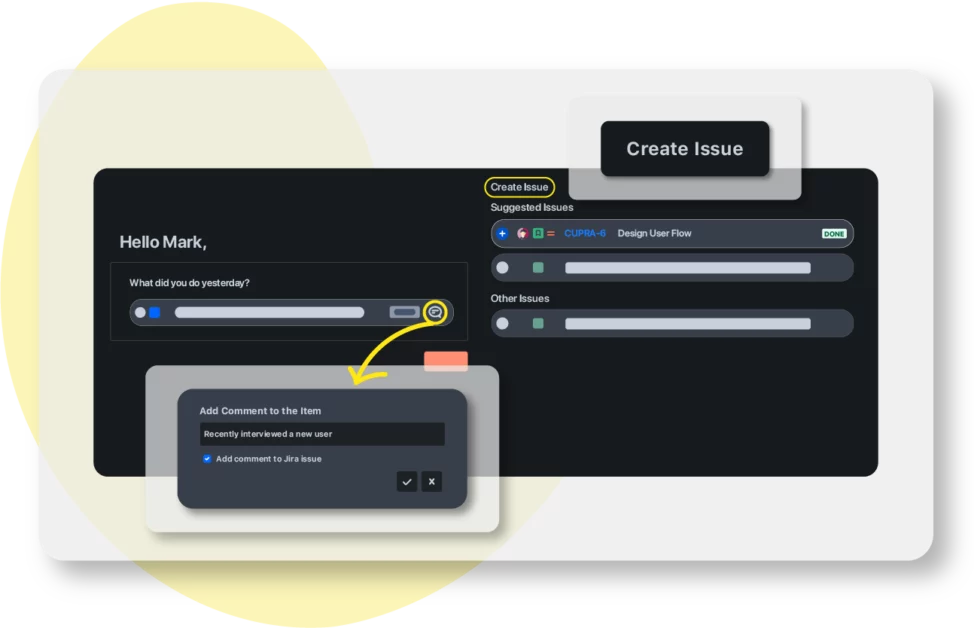
What is a Stand-up Meeting?
A stand-up meeting is a brief, daily gathering where team members share their progress, goals, and any obstacles they’re facing. Typically involving product owners, developers, and the scrum master, this core team meeting is usually held at the beginning of the day and lasts around 15 minutes. The primary purpose of a stand-up meeting is to foster transparency, identify potential roadblocks, and facilitate necessary collaboration. By regularly reporting their progress and plans, team members enforce accountability and ensure everyone is on the same page.
Benefits of Daily Stand-up Meetings
Daily stand-up meetings offer numerous benefits to teams, including:
- Improved Communication and Collaboration: Regular updates help team members stay informed about each other’s work, fostering better communication and collaboration.
- Enhanced Transparency and Accountability: By sharing their progress and plans, team members create a transparent environment where everyone is accountable for their tasks.
- Identification and Removal of Blockers: Stand-up meetings provide a platform to identify and address obstacles promptly, ensuring that issues are resolved quickly.
- Clear Indicators of Project Progress: Regular updates offer clear insights into the project’s status, helping the team stay on track.
- Improved Team Dynamics and Morale: Frequent interactions during stand-ups can strengthen team bonds and boost morale.
- Increased Productivity and Efficiency: By keeping meetings short and focused, teams can maximize their productivity and efficiency.
Incorporating daily stand-up meetings into their routine allows teams to experience these benefits and improve their overall performance.
The Consequences of Unprepared Team Members
When participants are unprepared, it affects the entire team and the quality of the standup meeting:
- Inefficiency: Meetings take longer as participants struggle to recall their updates on the spot.
- Lack of Clarity: Updates can be vague and unstructured, making it difficult for the team to understand the current status of tasks.
- Reduced Productivity: Time spent in an unproductive meeting is time taken away from actual work, decreasing overall productivity.
- Frustration: Unpreparedness can lead to frustration among team members, particularly those who come prepared and ready to contribute.
An effective stand-up meeting structure is crucial for maintaining productivity and typically includes the following elements:
- Preparation: Team members should come prepared with their updates.
- Time-boxing: Meetings should be kept short, ideally 15 minutes.
- Focus: Discussions should be relevant to the entire team and avoid delving into unnecessary details.
- Leadership: An effective leader should moderate the meeting to keep it concise and focused.
In Agile environments, particularly in Scrum methodology, daily scrum meetings are essential for fostering communication among team members regarding project progress and challenges.
Effective Stand-up Meeting Structure
An effective stand-up meeting structure typically includes the following elements:
- A Clear Agenda and Purpose: Define the meeting’s objectives to keep it focused and productive.
- A Designated Leader or Facilitator: Assign a scrum master or another team member to guide the meeting and ensure it stays on track.
- A Set Time and Duration: Schedule the meeting at a consistent time each day, and keep it brief—usually around 15 minutes.
- A Consistent Format: Use a structured approach, such as the three-question model: What did I work on yesterday? What am I working on today? What issues are blocking me?
- Active Participation from All Team Members: Encourage everyone to contribute their updates and engage in the discussion.
- Focus on Progress, Goals, and Obstacles: Keep the conversation centered on progress, goals, and any blockers, avoiding detailed problem-solving or side discussions.
By following this structure, teams can ensure that their stand-up meetings are productive, efficient, and effective.
Overcoming Common Challenges
Despite the benefits of daily stand-up meetings, teams may encounter common challenges, such as:
- Difficulty in Keeping the Meeting Concise and Focused: Long-winded updates can derail the meeting. Set clear expectations for brevity and relevance.
- Struggling to Engage All Team Members: Some team members may be less vocal. Encourage active participation by creating an inclusive environment.
- Dealing with Remote or Distributed Teams: Remote teams can face communication barriers. Use video conferencing tools to bridge the gap and ensure everyone is involved.
- Managing Side Conversations and Distractions: Side conversations can disrupt the meeting. Establish a clear leader to keep the discussion on track.
- Ensuring the Meeting is Productive and Not Just a Status Update: Focus on actionable insights and addressing blockers rather than merely reporting status.
To overcome these challenges, teams can try the following strategies:
- Set Clear Expectations and Guidelines: Define the meeting’s purpose and structure to keep it focused.
- Encourage Active Participation and Engagement: Foster an environment where all team members feel comfortable sharing their updates.
- Use Video Conferencing Tools for Remote Teams: Leverage technology to ensure remote and distributed teams can participate effectively.
- Establish a Clear Leader or Facilitator: Assign someone to guide the meeting and manage the flow of conversation.
- Focus on Progress, Goals, and Obstacles: Keep the discussion centered on key points, avoiding detailed problem-solving during the stand-up.
By addressing these common challenges, teams can ensure that their daily stand-up meetings are effective, productive, and beneficial to their overall performance.
How NASA Can Ensure Prepared Participants in Remote Teams
NASA – Not Another Standup App for Jira addresses the issue of unprepared participants by providing tools and features designed to streamline the preparation process and enhance the quality of effective daily standup meetings. Here’s how NASA can help:
- Asynchronous Preparation:
- Advance Preparation: NASA allows team members to submit their updates asynchronously before the standup meeting. This approach encourages participants to prepare their thoughts in advance, ensuring they have clear and concise updates ready.
- Flexibility: Team members can prepare their updates at a convenient time, reducing the pressure to do so immediately before the meeting.
- Collaboration and Engagement :
- Transparency: The app makes all updates visible to the entire team, ensuring transparency and encouraging accountability.
- Interactive Interface: NASA’s user-friendly interface encourages team members to engage with each other’s updates, fostering better communication and collaboration outside of the standup meeting.
- Structured Format:
- Guided Questions: NASA provides a structured format for updates, typically following the “Yesterday, Today, Blockers” model. This structure helps participants focus on the most relevant information, reducing the tendency to ramble.
- Clear Expectations: The predefined format sets clear expectations for what each participant needs to prepare, making the process straightforward and manageable.
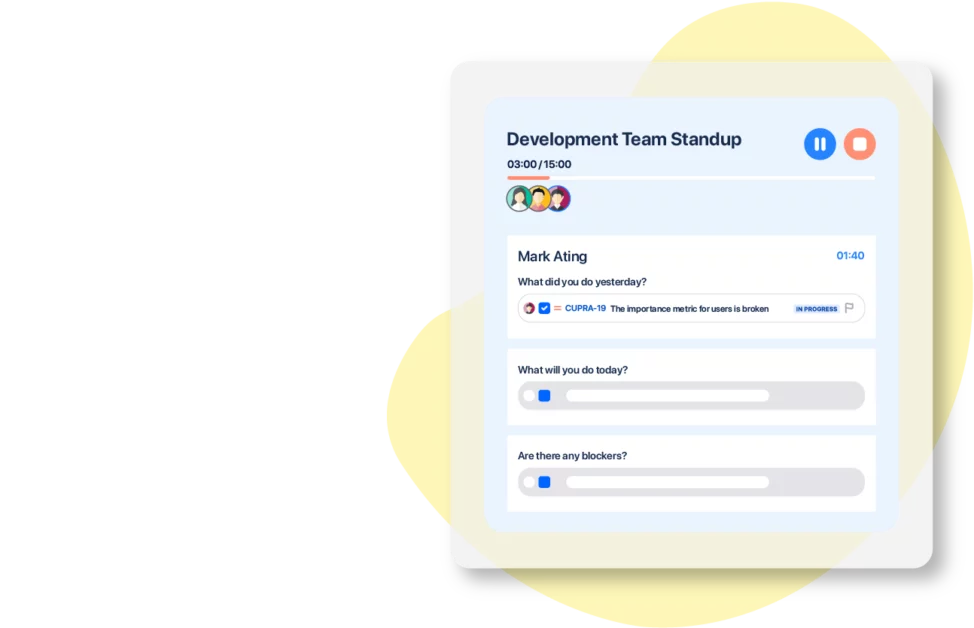
- Integration with Jira:
- Centralized Information: By integrating with Jira, NASA links updates directly to Jira tasks. This integration ensures that all relevant information is readily available, making it easier for participants to prepare meaningful updates.
- Real-Time Sync: Updates are synced in real-time, ensuring that the latest information is always at hand, reducing the need for last-minute scrambling.
- Focus on Blockers:
- Highlighting Issues: NASA prompts team members to identify blockers in their updates. This focus ensures that critical issues are highlighted and can be addressed promptly during the meeting.
- Prioritization: By emphasizing blockers, NASA helps the team prioritize problem-solving over routine updates, making the meeting more productive.
- Analytics and Reporting:
- Meeting Insights: NASA provides analytics and reports on standup meetings in a team journal, offering insights into participation and preparation habits. These insights can help teams identify patterns and areas for improvement.
- Continuous Improvement: Regular feedback from the app helps teams refine their standup process, ensuring that preparation and participation remain high.
Implementing NASA to Enhance Preparation for Daily Stand Up Meetings
Implementing NASA in your standup routine is a straightforward process that can lead to immediate improvements:
- Setup and Integration:
- Install NASA: Start by installing NASA from the Atlassian Marketplace and integrating it with your Jira instance.
- Configuration: Configure the app to match your team’s workflow and preferences, ensuring that updates are linked to the relevant Jira tasks. Find more information in the documentation.
- Training and Onboarding:
- Educate Your Team: Provide training for your team on how to use NASA effectively. Emphasize the importance of preparing updates in advance and following the structured format.
- Encourage Engagement: Encourage team members to actively engage with the app, reviewing updates asynchronously and coming to the standup meeting ready to discuss key points.
- Monitor and Adjust:
- Review Analytics: Use NASA’s analytics and reports to monitor the effectiveness of your standups.
- Continuous Improvement: Make adjustments based on the insights provided, continuously refining the process to ensure maximum efficiency.
Daily stand-ups have evolved to fit virtual formats through video conferencing and chat tools, ensuring full team participation for effective communication and connection.
NASA in Action – Improving Your Effective Stand Up Meetings
Teams that have adopted NASA for their standup meetings have reported significant improvements in preparation and overall meeting quality. For instance, a software development team noticed that their standup meetings were reduced by 50% in duration, as participants came prepared with clear, concise updates. Moreover, the focus on blockers helped the team address critical issues more promptly, improving their sprint velocity and overall project progress. NASA also helps teams spread across different time zones by providing a platform that accommodates geographical diversity, ensuring active participation from all members.
Conclusion
Unprepared participants can significantly hinder the effectiveness of standup meetings, leading to inefficiency, lack of clarity, reduced productivity, and frustration. NASA – Not Another Standup App for Jira addresses this issue by providing a structured format, asynchronous updates, automated reminders, Jira integration, and insightful analytics. These features ensure that team members come prepared, making standup more efficient and productive. By implementing NASA, your team can transform standup meetings into a valuable tool for agile success. Start using NASA today and experience the benefits of well-prepared, focused, and productive standup meetings.

